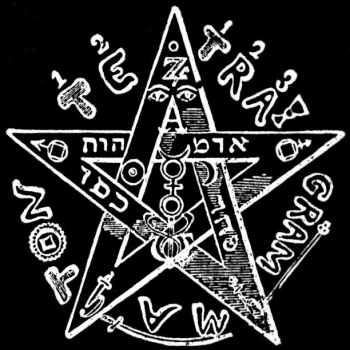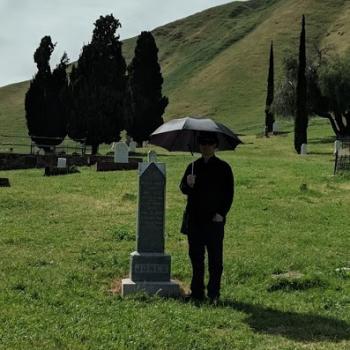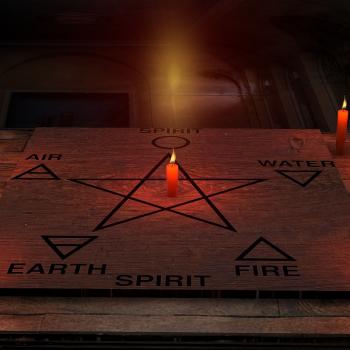The animistic worldview is the red-headed stepchild of Western pagan worldviews. It finds itself mostly ignored or taken for granted. When it’s not ignored, it doesn’t get a whole lot of respect. There are some pretty good historical reasons for this, mostly having to do with what people think animism is. Whether they’re right or not is a different matter.
In the pagan blogosphere, there are lengthy debates about soft polytheism vs. hard polytheism vs. squishy polytheism. Occasionally henotheism creeps into the discussion or monotheism is brought up as a counterpoint. And every once in a while, people will speak of being animist—usually while also holding one of the other positions as well.
In an animistic worldview, all things have spirits that indwell and animate every person or object. An animist lives in a world where people have souls, and the gods have souls, and animals have souls, and the ancestors have souls…but so do mountains, fields, buildings, cars, and computers. (Admit it, you’ve yelled at your computer, too.)

When we think about animism at all, there’s often an assumption of older and somehow purer practices. We associate animism with “the primitive.” The two ideas just seem naturally to go together. We imagine our tribal ancestors living off the land; we dream of simpler times. But one thing is for sure: we know it’s not us. The world has moved on. But has it?
Animism is a modern word. Its current anthropological meaning comes out of the 19th century and was proposed by a scientific rationalist who was looking for the origins of religion.
The Origin of the Word “Animism”
It was 1871. E. B. Tylor, one of the founders of cultural anthropology, published a book titled Primitive Culture. In this book, he proposed that religion in general, and animism and polytheism in particular, were survivals of humanity’s irrational past.
Tylor believed that early people looked out across the world and saw many things they did not understand. At its simplest, their answer was, “because spirits!” That was animism.

Tylor held animism to be the original religion – a belief that spirits were in, and animated, everything in the world. While he believed animism to be the oldest and most pure religious belief, he also believed that it was totally and completely wrong.
Tylor’s evolutionary theory of religion assumed that all religious beliefs are attempts to explain the world. That is, religions are primarily all explanatory models, attempting to answer questions like “Why does the sun come up?” “Why do people get sick?” “What happens when we die?”
Those who subscribe to such theories propose that religion progresses through evolutionary stages. They say that someday, all religion will be replaced by science—the perfect explanatory model according to 19th century scientists.
Now that we’ve passed out of earlier, irrational stages (Tylor argued), going back would be unthinkable. To Tylor, even typical Western religious feeling (Christianity, for those keeping score) was an irrational survival of an ancient past, and better discarded. For Paganism, the Tylor takeaway is this: most people believe that we’re all civilized and modern, so we shouldn’t have such ridiculous beliefs anymore.
Though Tylor’s theory has been critiqued and discarded by anthropologists, it continues to be the popular “scientific” approach to religion. His belief in rationality and progress, continues to be echoed to this day by many New Atheists.
Animism Is Not Primitive

Not surprisingly, the scientific definition of animism assumes that there is no spiritual reality out there to contact. The underlying assumption is that there’s no reality to it. It puts animistic belief down to an honest mistake – that “primitive man” was unable to tell dreams from everyday reality.
In the 1800s, these ideas were easily linked in the popular mind with the “primitives” of the past and the “savages” in overseas empires. Being Western (and White) was linked with progress, science, rationality, and general awesomeness. It was, after all, an age of empire.
Much to the embarrassment of positivist rationalists, magical and spiritual beliefs have not quietly gone the way of the dinosaurs. Magical thought never disappeared at all. It just got mocked in public by those in power.
The narrative we live with is that Westerners can’t be animists, or polytheists, or mages (of any their various stripes). We are forever searching for some legitimacy because we live in a culture that just doesn’t want to believe in such things.
Animistic practices are simply spiritual practices of the here and now. They are not something we need to retrieve from some distant, half-imagined past. If animism is the belief that spiritual world is the same one as the world around us, then it is a world open to us all.

Patheos Pagan on Facebook.

the Agora on Facebook
The Other Side of the Hedge is published on the first and third Sunday of the month. Subscribe via RSS or e-mail!
Please use the links to the right to keep on top of activities here on the Agora as well as across the entire Patheos Pagan channel.















